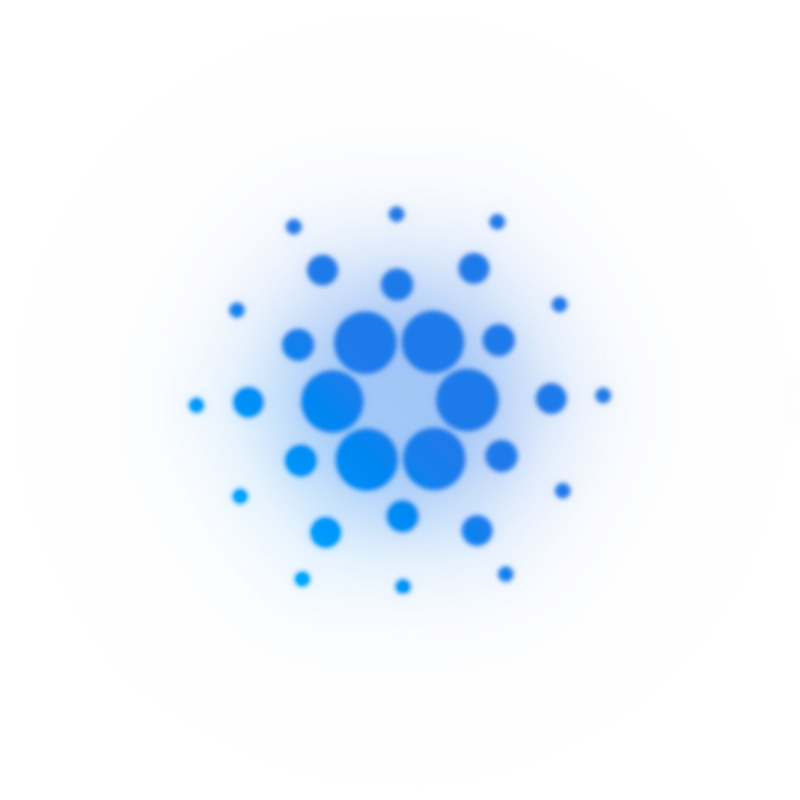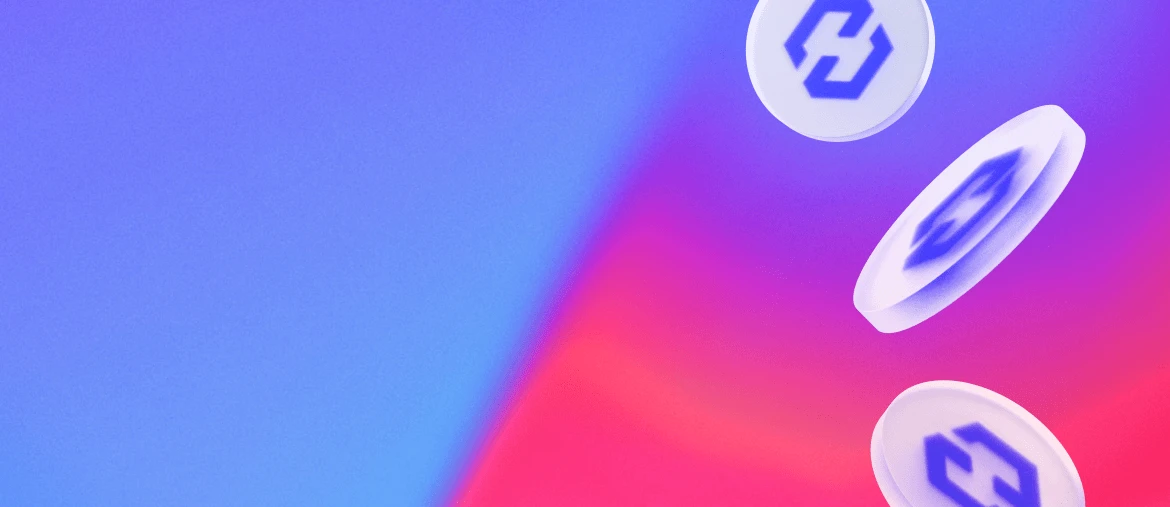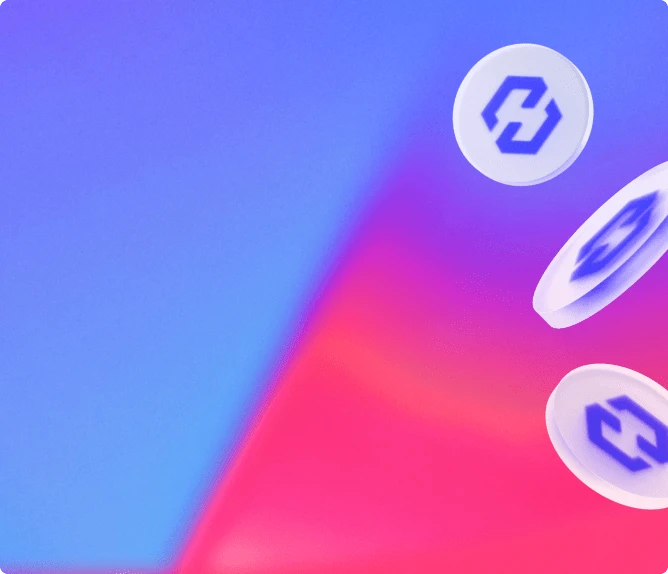Investing in crypto-assets carries risks of liquidity, volatility, and partial or total capital loss. Crypto-assets held are not covered by deposit and securities guarantee mechanisms.


Sign up for our newsletter
Partners
Coinhouse
Our accounts
Coinhouse
Coinhouse SAS with a capital of €210,000, RCS Paris 815 254 545, headquarters: 14 Avenue de l'Opéra 75001 Paris – support@coinhouse.com. Registered with the AMF for activities related to the purchase/sale of digital assets against legal tender, the exchange of digital assets for other digital assets, and the custody of digital assets for third parties under the registration number: E2020-001.
Coinhouse payment solutions
Company registered with the Paris RCS under the number 914 384 557, registered with the Prudential Control and Resolution Authority as a payment service agent under the number 727503 of the electronic money institution Treezor, headquartered at 33 Avenue de Wagram, 75017 Paris.
General conditions, disclaimers and legal documents.



Cardano (ADA) is a blockchain project initiated by developer Charles Hoskinson.
Discreetly unveiled in 2015 and financed in 2017 by an ICO that raised $62M, this blockchain went live on September 23, 2017.
On the social network Reddit, Charles Hoskinson calls himself “Ethereumcharles”.
And with good reason, he’s one of the founders of the Ethereum project alongside Vitalik Buterin, who even assumed the role of “CEO of Ethereum” for a brief period.
This relationship did not last, however, due to a major divergence: Buterin wanted Ethereum to remain an open-source, not-for-profit project, while Hoskinson wanted to turn Ethereum into a company.
After a period of negotiation, Hoskinson was asked to leave the project, and Ethereum’s development remained structured under a non-profit Foundation under Swiss law.
Hoskinson therefore decided to focus on his own Blockchain project.
This project is Cardano, with the asset “ADA”, in homage to computer pioneer Ada Lovelace.
A blockchain that, in Hoskinson’s words, “solved Proof-Of-Stake” thanks to the Ouroboros protocol.
Cardano is an open-source, third-generation Proof-of-Stake blockchain project.
It is decentralized and can execute smart contracts.
At its launch, this cryptocurrency was heralded as the first blockchain developed with a scientific philosophy. Cardano blockchain is named after its inventors, who include engineers and scientists.
Three distinct entities make up the Cardano project:
Cardano aims to establish itself as a payment solution on a par with Bitcoin, for example.
The ADA crypto is the token linked to the Cardano project.
It is therefore possible to buy Cardano.
Cardano makes it possible to develop and maintain dApps (decentralized applications).
The ADA cryptocurrency was born of a difference of opinion between two men: Charles Hoskinson and Vitalik Buterin.
On the social network Reddit, Charles Hoskinson calls himself “Ethereumcharles”.
And with good reason: he is one of the founders of the Ethereum project alongside Vitalik Buterin, who even assumed the role of “CEO of Ethereum” for a brief period.
This promising relationship did not last, however.
Hoskinson and Buterin did not share the same vision of the commercial direction Ethereum should take.
Buterin wanted Ethereum to remain an open-source, not-for-profit project, while Hoskinson wanted to turn Ethereum into a business.
After a period of negotiation, Hoskinson was asked to leave the project, and Ethereum’s development remained structured under a non-profit Foundation under Swiss law.
Hoskinson therefore decided to focus on his own Blockchain project.
He was joined in this venture by Jeremy Wood, a former Ethereum employee.
Together, they created the blockchain engineering company IOHK to bring this new project, more in line with Hoskinson’s vision, to life.
This project is Cardano.
It is named after Girolamo Cardano, a 16th-century philosopher, mathematician, engineer and astrologer.
As for its asset, “ADA”, it is named after Ada Lovelace, a pioneer of computer science.
A blockchain that, in Hoskinson’s words, “solved Proof-Of-Stake” thanks to the Ouroboros protocol.
Charles Hoskinson embarked on the development of Cardano back in 2015.
This ambitious project aims to solve the problems present in the cryptocurrency sector.
Hoskinson considers Bitcoin to be too slow and not flexible enough.
As for Ethereum, in his opinion it is not reliable enough, with too limited prospects for evolution.
Hoskinson thus presents Cardano crypto as a third-generation blockchain offering scalability, security and decentralization all at once.
Cardano’s goal is to run decentralized applications.
ADA enters the cryptocurrency world in September 2017 via a market capitalization of $600 million.
It reaches $10 billion upon its launch in 2017, then $33 billion in 2018, before returning to the $10 billion mark.
Cardano is rapidly gaining momentum and popularity.
In 2017, the IOHK lends its support to the University of Edinburgh to launch the Blockchain Technology Laboratory.
In 2019, Cardano signs an agreement with the Free University of Tbilisi to develop a degree verification system in Georgia.
In 2021, Cardano partners with the Ethiopian government to implement the Atala PRISM solution.
This will identify and track the progress of students throughout their school career.
This is the largest partnership ever signed between a government and a blockchain.
Cardano’s success is undeniable.
The ADA will again reach a value of $39.8 billion in 2021.
It was then one of the ten most important blockchains.
In the same year, it becomes possible to use smart contracts on the Cardano mainnet.
On May 4, 2022, Cardano launches its first native stablecoin, Djed.
The Ouroboros protocol, whose Whitepaper changes regularly, is frequently accused of pseudo-academic complexity, and raises eyebrows in the community.
The stated aim is to maintain a Proof-Of-Stake blockchain with high transaction processing capacity, with limited inflation, progressively reduced over a ten-year period.
To achieve this, Cardano uses a specific two-tier architecture.
The first, called Cardano Settlement Layer (CSL), enables transactions with the ADA cryptocurrency.
The second, called Cardano Computation Layer (CCL), is used to run Blockchain applications and the work involved in developing and evolving the protocol.
This separation is intended to make Cardano more “agile”, enabling it to operate in Proof-of-Stake mode, while at the same time making it much faster to apply changes and possible “forks”, compared with protocols such as Ethereum, which require global consensus.
Cardano sees itself as a direct competitor to Ethereum, through the development of smart-contracts and the ability to easily build decentralized applications running entirely on the Blockchain.
Owning a full copy of the Cardano blockchain is as simple as on any other blockchain: simply download and run the appropriate software.
On the other hand, creating a block and adding it to the Blockchain is reserved for a very private club of just 7 members, or “slot leaders”, who alone can create blocks and validate transactions.
These Slot Leaders are the only validating nodes on the network.
Although the information is not officially available, all indications are that these 7 nodes are wholly owned by three entities: IOHK, a private company owned by Charles Hoskinson, the Cardano Foundation and Emurgo, an investment-oriented entity of the Cardano Foundation.
Since its launch, Cardano has been in its initial “Byron” phase.
The developers at the helm of the project assure us that, as of the next stage of development called “Shelley”, a true Proof-Of-Stake will be implemented, enabling anyone with ADA tokens to participate directly in the transaction validation process by maintaining a node, or indirectly via delegation as on Tezos.
The Shelley update was scheduled for 2019.
With the end of the year approaching, no credible source seems to indicate a short-term roll-out.
Usually, this type of major update is preceded by a long period of “testnet”, a secondary network with no real financial stakes, in order to test the code under real conditions.
This testnet, although announced, is not available.
It therefore seems unlikely that the Shelley update will be available on the main network before 2020.
Cardano is a project with generous ambitions and a mastery of announcement effects.
However, it has to be said that the Ethereum-Killer is currently bridging the gap between its ambitions and its achievements.
A smart-contract platform without a single decentralized application, a blockchain with an extremely small number of transactions, a network controlled by seven nodes from three sister entities, transaction processing capacities inferior to those of Ethereum, development promises delayed or forgotten.
So how can we justify a current market valuation of over one billion euros?
Unfortunately, through speculation and hype alone.
Listed on several major marketplaces at the end of 2017, the ADA token had rapidly risen from a few cents to over a dollar at the height of the crypto bubble in January 2018.
The asset enjoyed a “hype” similar to that surrounding projects like IOTA or TRON.
Only since then, the crash of 2018 has come and gone, and the ADA token has lost up to 97% of its value since its all-time high.
A volatility that raises questions.
There’s no doubt that it will take more than hype to get back on track towards the asset’s all-time highs.
Payment of transaction fees: ADA tokens are used to pay transaction fees on the Cardano network.
Each time a transaction is completed or a smart contract is executed on the blockchain, a fee is paid in ADA to reward the validators who secure the network. 2. Staking and participation in governance: One of Cardano’s distinctive features is its Proof-of-Stake (PoS) consensus mechanism.
ADA holders can participate in staking, i.e. locking their tokens to help validate transactions.
In return, they receive rewards in the form of new ADAs.
In addition, staking enables users to participate in network governance by voting on proposals for updates or new features. 3. Support for decentralized applications (dApps): Cardano is a platform for the development of decentralized applications (dApps).
ADA tokens can be used within these dApps for a variety of transactions, such as purchasing digital goods, paying for services or financing projects via decentralized crowdfunding mechanisms. 4. Store of value and investment: Like many cryptocurrencies, ADA can also be used as a store of value or as an investment asset.
Investors buy and hold ADA in the hope that its value will increase over time, in line with the development of the Cardano ecosystem and the growing adoption of blockchain. 5. Participation in liquidity pools: In Cardano’s DeFi(decentralized finance) ecosystem, ADA can be used to provide liquidity to decentralized exchanges and other financial protocols.
Users who contribute to these liquidity pools are often rewarded with transaction fees or other tokens.
While the Cardano crypto project may look attractive on paper, in its early days it lacked a developer community, traction and short- to medium-term interest.
Consequently, an investment in the ADA asset might have seemed a particularly risky gamble at that stage.
Today, the ADA crypto-currency appears to be a safer investment, enjoying strong popularity and gradually establishing itself as one of the crypto-currencies to consider.
But its high volatility, observed in 2021, where other cryptos have remained stable, should call for caution.
We invite investors wishing to diversify their crypto portfolios to look at other players such as Tezos.
We also offer a Premium service to guide them towards projects with a more concrete value proposition.
At present, there’s nothing to suggest that Cardano blockchain has the capacity to compete with Ethereum or even occupy the market in any significant way in the long term.
Share the article


Download app